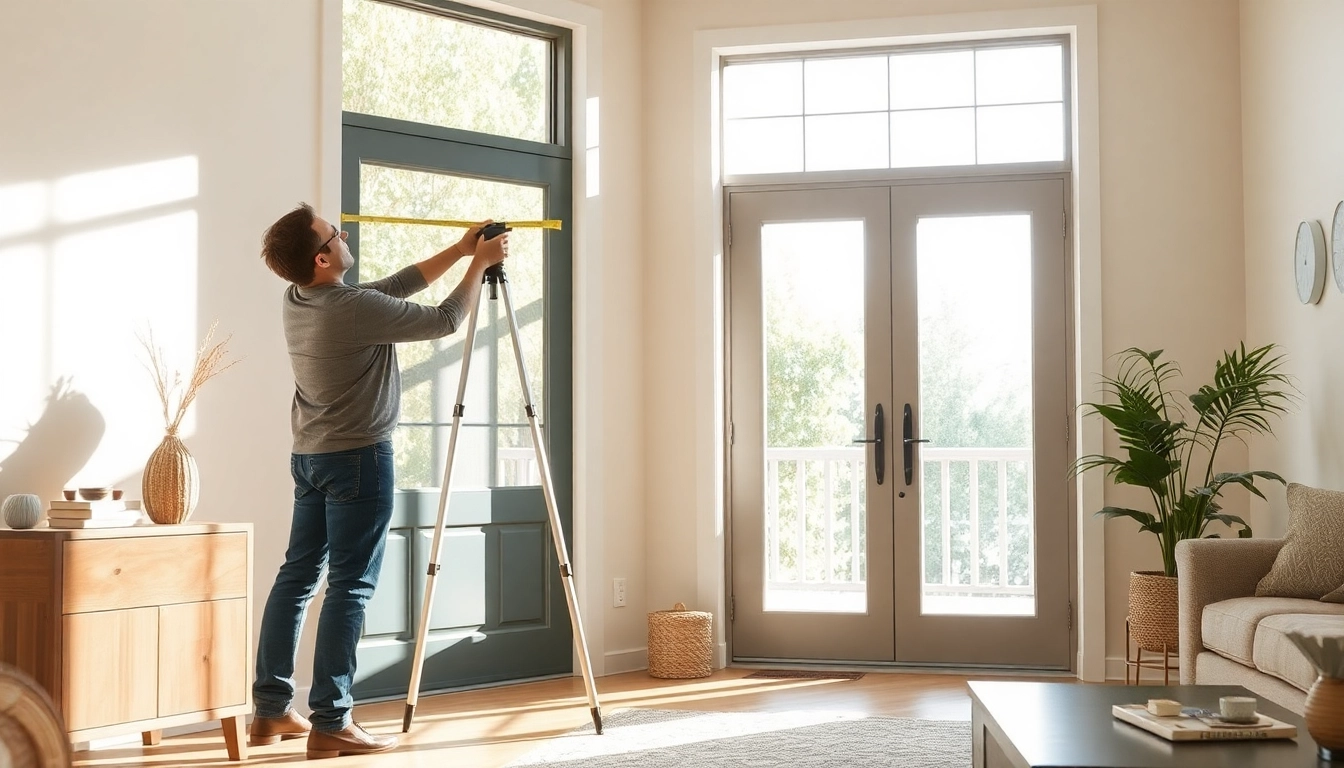Understanding Window and Door Replacement: Why It Matters
What window and door replacement covers
Replacement projects typically involve updating the sashes, frames, and glass, along with hardware and sealants. Projects may target single units or an entire envelope of openings across the home. Beyond new panes, an effective replacement improves air-tightness, reduces drafts, enhances weather resistance, and modernizes operation—reducing maintenance needs and preventing hidden damage from moisture infiltration.
Benefits and ROI of upgrading
Key benefits include more stable indoor temperatures, improved comfort on both hot and cold days, and quieter living spaces thanks to better glazing and seals. Energy savings are常 seen as a major motivator, with homeowners often reporting noticeable drops in utility bills after upgrading to modern, energy-efficient products. A well-executed replacement can also elevate curb appeal, which may support resale value and buyer confidence. Beyond dollars and cents, you gain easier operation, reduced condensation, and better security features that modern hardware provides.
Common missteps to avoid
Avoid prioritizing price over performance. Low upfront cost can mask higher long-term costs if products lack energy efficiency or durability. Don’t underestimate measurement accuracy— improper sizing or gaps can undermine insulation and cause leaks. Skipping the in-home evaluation can miss issues like structural settling or frame rot. Finally, neglecting warranties or post-install care undermines value; ensure coverage extends beyond installation day and includes long-term service options.
Planning Your Project: Budget, Timing, and Scope
Budget considerations for window and door replacement projects
Plan for three major components: product cost, professional installation, and any necessary add-ons (grilles, trim, flashing, or refinishing). Material choices—vinyl, wood, or fiberglass—drive price, maintenance, and durability. It’s prudent to set aside a contingency fund for unexpected site conditions or design changes, typically around 10–15% of the project total.
Scheduling and lead times for window and door replacement
Lead times vary by product line and season, often ranging from a few weeks to several weeks. Installation durations depend on scope: a handful of windows might take one to a few days, while full-house projects can span longer sequences with staged openings to maintain weather protection. Align expectations with your installer on weather contingencies and access needs.
Defining scope and prioritizing energy improvements
Start with performance-focused goals: address the most drafty or high-heat-loss openings first, then plan a full-envelope upgrade if budget allows. Consider prioritizing openings with large sun exposure or those facing prevailing winds. Pair window upgrades with door improvements that separate interior spaces from unconditioned areas to maximize energy benefits.
Materials, Styles, and Energy Efficiency for Window and Door Replacement
Choosing materials: vinyl, wood, fiberglass
Vinyl offers excellent value, low maintenance, and solid energy performance, making it a popular choice for many homes. Wood provides timeless aesthetics and a warm interior finish but requires more maintenance. Fiberglass strikes a balance, delivering strength, stability, and efficiency with moderate upkeep. Your climate, budget, and desired look should guide the material selection, along with warranty terms and long-term performance data.
Matching architectural style and interior design
Consistency matters: grille patterns, hardware finishes, and interior trim should harmonize with existing architectural cues and interior design. For traditional exteriors, you might favor divided lite patterns; for contemporary homes, large uninterrupted glass panes with clean hardware offer a modern feel. Interior options influence light diffusion and vibe, so sampling finishes in daylight helps ensure the right harmony.
Energy efficiency ratings and certifications
Look for products with strong energy performance metrics, typically labeled with U-factor and Solar Heat Gain Coefficient (SHGC). Lower U-factors indicate better insulation, while SHGC values reflect solar heat gain. Certifications from recognized bodies assist in comparing products. Clear documentation helps you quantify expected comfort and potential energy savings over time.
Installation Process and In-Home Experience
In-home consultation steps and measurements
A thorough in-home visit includes precise measurements, assessment of rough openings, and a review of site conditions (sill rot, moisture, or structural concerns). The consultant should discuss product options, installation methods, and warranty terms, then provide a detailed written plan and timeline.
Installation timeline and what to expect on install day
On installation day, expect a skilled crew to remove old units, seal and insulate new frameworks, and verify operation. Optional staging of rooms near the work area helps minimize disruption. A thorough final inspection ensures proper weather sealing, smooth operation, and finishes that align with design goals.
Quality checks, warranties, and post-install care
Quality checks cover fit, function, and airtightness. Warranties vary by material and brand, often spanning several years to multiple decades for frames and hardware, with glass and coatings carrying separate coverage. Post-install care typically includes routine cleaning, occasional lubricant for moving parts, and periodic inspections to sustain performance over time.
Measuring Success and Next Steps
Warranties, maintenance, and longevity
Protect your investment with proactive maintenance: clean tracks, lubricate hardware, and address any condensation or moisture concerns promptly. High-quality installations paired with durable materials extend the lifespan of windows and doors, reducing replacement cycles and ongoing costs.
How to evaluate project outcomes and savings
Track comfort improvements, bill trends, and indoor climate consistency before and after installation. Compare pre- and post-install energy usage, note reductions in drafts, and assess airstream quietness. A well-executed project should show tangible gains in comfort, lower energy waste, and enhanced home value.
How to start with Modern Day Window today
Begin with a clear set of goals: performance targets, preferred materials, and your budget range. Collect references, review warranties, and confirm installation timelines. With a focused plan, you can move from decision to optimized living space efficiently and confidently.
